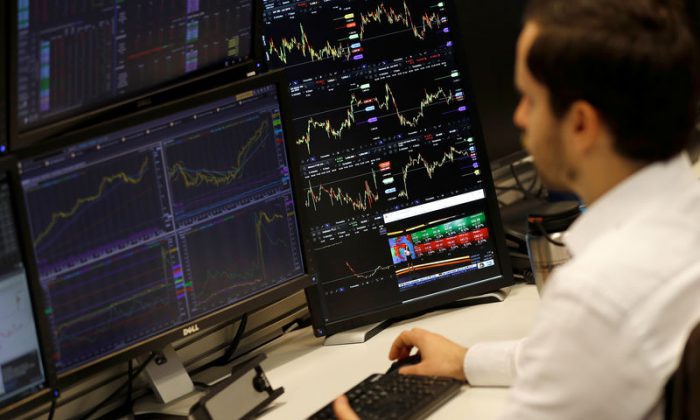U.S. stock index futures were largely flat on Monday evening, stabilizing after a strong rebound on Wall Street earlier in the day.
The recovery came as comments from President Donald Trump eased fears of a renewed escalation in the U.S.–China trade dispute.
At 20:18 ET (00:18 GMT), S&P 500 Futures traded near 6,697.75, while Nasdaq 100 Futures gained 0.1% to 24,934.0 and Dow Jones Futures edged 0.1% higher to 46,353.0.
Wall Street Rebounds as Trade Fears Cool
During the regular session, major U.S. indices posted solid gains:
- S&P 500 rose 1.6%,
- NASDAQ Composite climbed 2.2%, and
- Dow Jones Industrial Average added 1.3%.
The rebound followed President Trump’s reassurance that trade relations with Beijing “will all be fine,” a marked softening of his earlier threats to impose 100% tariffs on Chinese imports and tighten export restrictions on U.S. technology.
The more conciliatory tone boosted investor confidence, particularly in technology and industrial sectors—the hardest hit during last week’s selloff.
AI and Semiconductor Stocks Power Rally
Chipmakers and AI-linked companies led Monday’s advance.
- Broadcom Inc. (NASDAQ: AVGO) surged nearly 10% after announcing a new partnership with OpenAI to develop custom AI processors.
- Nvidia (NASDAQ: NVDA) rose almost 3%, continuing its strong performance amid growing demand for AI hardware and software ecosystems.
Broader risk sentiment improved across semiconductors, automation, and cloud-infrastructure names, with investors rotating back into high-beta growth stocks.
Shutdown Concerns and Earnings in Focus
Despite the rebound, market caution persists as the U.S. government shutdown enters its third week, delaying key economic indicators and complicating the Federal Reserve’s data-driven approach ahead of its October 28–29 policy meeting.
Investors are also preparing for the kickoff of the third-quarter earnings season, with results from JPMorgan Chase (NYSE: JPM), Citigroup (NYSE: C), and Wells Fargo (NYSE: WFC) due Tuesday. Analysts expect the banking sector’s commentary on credit conditions and consumer demand to set the tone for the next leg of market direction.
Market Outlook
While short-term sentiment has improved, analysts note that volatility may remain elevated amid ongoing trade negotiations, fiscal uncertainty, and shifting monetary expectations.
“Trump’s moderation has given the market breathing room,” one strategist said, “but sustained upside will depend on how the earnings picture and Washington gridlock evolve over the next two weeks.”





